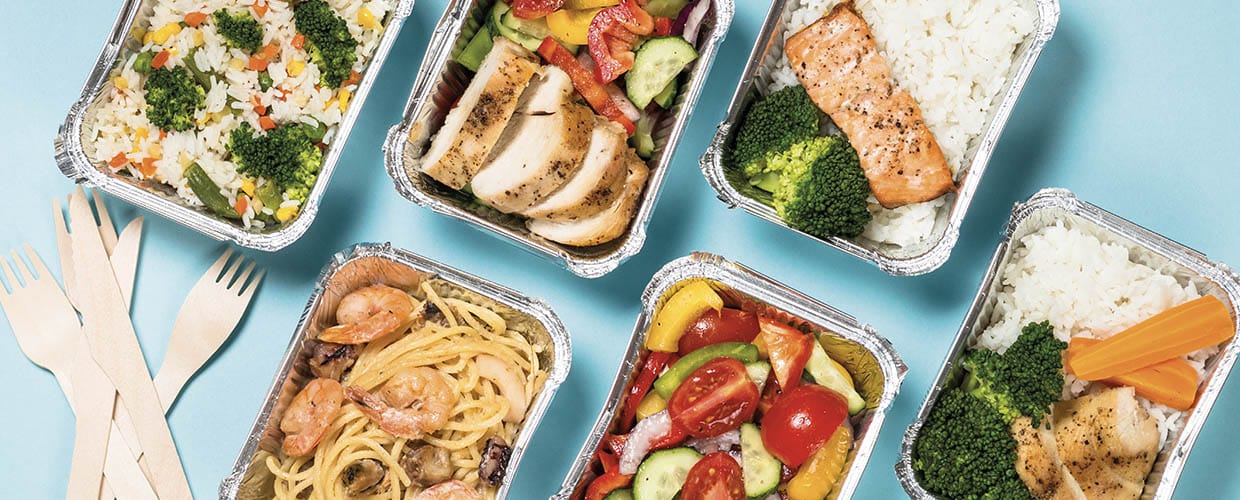Low-carb, high-fat diets aren’t for everyone. In fact, there is still uncertainty about these diets’ long-term effects and the potential impact that consistent, high intensity training in a glycogen-depleted state can have on the body.
More people are realising that insulin is a major cause of many health issues experienced today, and that an overconsumption of processed carbs and sugar has led to our current health predicament.
The answers to this problem lie with carbohydrate manipulation. From relooking the quality of carbs consumed, factoring in nutrient timing, and utilizing a couple techniques; you will realise that carbs are not the enemy.
It’s all about carb quality.
Whatever approach you adopt, it is vital to stick with natural, whole food carbohydrates sources, whether you’re a physique competitor, an endurance athlete or just someone looking to transform your body.
The closer your carbs are to their natural state, the better they are for you. Most of these foods will consist of complex carbohydrates, the most efficient source of sustained energy release.
Timing your carb intake
The importance of nutrient timing should never be overlooked. Where many people go wrong is thinking that a balanced diet means dishing up a portion of carbs, protein and healthy fats at every meal.
The issue with this approach is that it continually spikes insulin, which may reduce insulin sensitivity over time and promote fat storage instead of fat loss.
That’s why we need to a more strategic approach to our carb consumption. Stated another way, if your daily carb requirement is 200g, there is no reason why you need to divide that up equally across your three or four daily meals.
As carbs provide our most readily available source of energy – glucose – it makes sense to eat most, if not all of daily recommended intake before, during and/or directly after intense activity.
Following this approach ensures a beneficial supply of circulating glucose in the bloodstream, which can be absorbed and used almost immediately by muscles for fuel, leaving little to be stored as fat, and aiding muscular development as well as recovery.
Here are a few tools which you can use to effectively manipulate your carb consumption in order to increase your performance levels:
Carb backloading
What is carb backloading?
A nutrient timing approach that aims to manipulate the power of insulin in the fat storage process. John Kiefer, the creator of the carb backloading diet, believes that resistance training creates an environment in our bodies where we can take full advantage of the power of insulin to promote muscle growth, without the drawbacks associated with fat and weight gain.
How to do it:
Limit your daily recommended carb intake to the period immediately after exercise. This will aid recovery and replenish glycogen stores to fuel your next intense training session.
Kiefer claims that because of the muscle damage and metabolic need to feed muscles, the insulin spiked from the carbohydrates eaten after training will shuttle most of the glucose into your muscle cells, not your fat cells.
Moderating or limiting your carb intake at every other meal of the day will help to make your more fat efficient by improving your body’s ability to tap into stored body fat as a source of energy during activity, and also boosts insulin sensitivity.
Who should use carb backloading
If fat loss and/or weight loss are your goals, then carb backloading is a suitable carb manipulation tool.
Carb cycling:
What is carb cycling?
Carb cycling involves structuring your carb intake over a set period – usually a week – alternating between days of low, moderate and high carb intakes.
This technique allows you to manipulate muscle glycogen stores in a way that promotes fat metabolism on the low carb days, which should outnumber the high carb days, while still benefiting from the recovery and muscle-building properties of carbohydrates on moderate and high carb days.
The net result is you’ll have lower glycogen levels for a few days following the carb reduction, boosting your body’s fat burning capabilities.
How to do it:
A typical week on a carb cycling diet may include one high carb day or “re-feed” as it’s commonly referred to, with four or more low carb days and one or two moderate carb days. The key is to drop your carb intake low enough on the low-carb days to promote greater fat metabolism, which, over time, will result in your body being more efficient with nutrients and greater fat burning potential.
Who should use carb cycling:
Those who aren’t taken with the idea of following a low-carb, high-fat diet 24/7 or find that carb backloading is still too restrictive for their active lifestyle. This is also an extremely popular dietary tool used by bikini and physique athletes to reduce body fat before a show.
Carb cycling guidelines:
The high carbohydrate days fill glycogen stores, boost your metabolism and limit muscle loss. The low carb days are the fat burning days, as they keep insulin levels low enough to allow for maximum fat metabolism while retaining muscle.
-
Consume more carbs on the two days you perform your hardest workouts.
-
On the remaining days of the week, consume a low-to-moderate carbohydrate diet depending on your training demands and goals.
-
Your low-carb days should fall on rest days and on the day you perform fasted cardio.
-
Adjust your calorie intake from healthy fats and proteins to meet your daily macronutrient requirements.
-
Keep fat intake low on high carb days.
Carb cycling plan:
Here’s a simple example of carbs cycling along with training days
Sunday: Rest days = low carb day (25-75g of carbs = 100-200 calories from carb sources)
Monday: Heavy training day = high carb day (200-250g of carbs = 800-1200 calories from carb sources)
Tuesday: Easy workout day = moderate carb day (75-125g of carbs = 300-500 calories from carb sources)
Wednesday: Rest day = low carb day (25-75g of carbs = 100-200 calories from carb sources)
Thursday: Hard workout = high carb day (200-250g of carbs = 800-1200 calories from carb sources)
Friday: Intense but short workout = moderate carb day (75-125g of carbs = 300-500 calories from carb sources)
Saturday: Fasted cardio = low carb day (25-75g of carbs = 100-200 calories from carb sources)
By using either one of these simple yet highly effective dietary approaches, you can get the best of all worlds – the health benefits associated with improved insulin sensitivity, the aesthetic benefits of reduced body fat, sustained all-day energy and a burst of carb-derived energy when you need it most.















